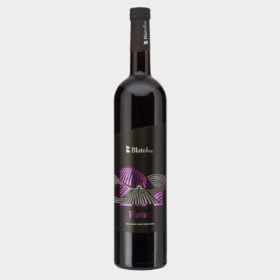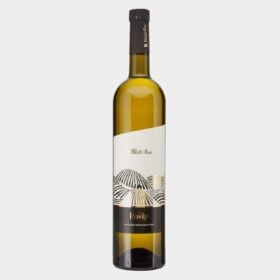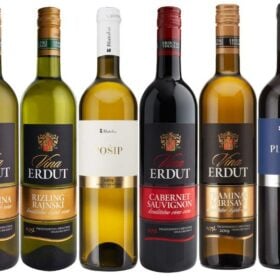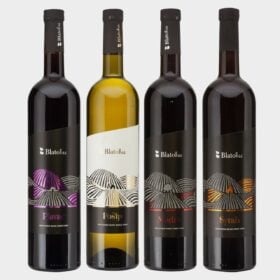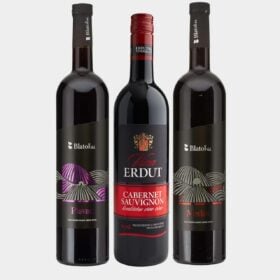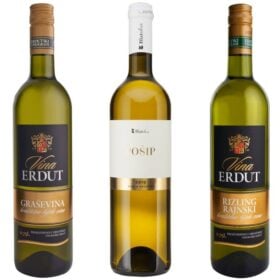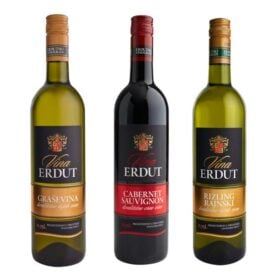The wine label is one of the most important tools a consumer has when choosing a bottle of wine. By understanding what the different elements of a label mean, you can get a good idea of what to expect from the wine.
In this article, we'll take a closer look at sample wine labels and use the information they provide to help us predict how the wine will taste. This guide will show you how to read wine labels from around the world and how to use the information on the bottle to predict how a wine will taste.
Wine label design is used all over the world to communicate important information about the wine to you, the customer. Once you know what information to look for, you can decipher almost any label, no matter how complex. In this guide, we look at the most common characteristics of a wine label.

Content
Wine producer or brand
-
Original price was: 19,98. 13,99Current price is: 13,99. Add to Cart
The name of a brand or manufacturer is often prominent on the label. A recognizable private label can give buyers a sense of familiarity, while an iconic producer usually charges a higher price because of their prestige.
Brand names can often be found prominently on labels. A recognizable private label can give buyers a sense of familiarity, while an iconic producer usually charges a higher price because of their prestige. Reliable brands may be more expensive up front, but their quality usually justifies the cost. When choosing between similar products, opt for the option from a trusted source. you'll be happy if your purchase lasts longer and performs better than the cheaper alternative.
Name of the wine
The name of the wine is important because it distinguishes it from other wines from the same producer. Many producers use the region of origin or the grape variety to name their wines, but some opt for something more unique that helps tell their story. Wines named after local historical figures, specific vineyards, or even relatives are also common.
Geographical Indications
Geographical indications are used to indicate the place of origin of the grapes used to make wine. In the European Union, Geographical Indications come with regulations that not only determine where the grapes come from, but can also determine which varieties can be used and/or how the wine should be made.
This information is useful for consumers who want to know the origin of their wine and also helps ensure that wines are made with high-quality grapes from specific regions. By stating the place of origin on a wine label, producers can guarantee a certain level of quality and taste.
The influence of the climate
Climate is a key factor in the ripeness of grapes, which in turn influences the style of wine. By learning about wine geography, you can determine which grape varieties and regions are likely to produce wines that meet your taste preferences. Knowing this information can help you make better wine buying choices.
grape variety
The grape variety is one of the most important factors that determine the taste of wine. Different grape varieties give different flavors and characteristics to wine, and many of them are world famous. Many people actively look for specific grape varieties on wine labels when looking for a particular type of wine. For example, people search for "Plavac Mali' on a label if they have a full Red wine want with intense dark fruit flavors, or 'Pinot Grigio' if they have a dry and refreshing White wine want.
In many parts of Europe, especially in France, the grape variety is not always indicated on the label. Rather, it is the region that appears on the label. This leaves it up to you to teaching methodology which varieties are commonly used in that particular region. However, in Croatia and other countries in the region of Croatia, it is customary to state the grape variety on the wine label if the wine is made from one grape variety.
Harvest year of a wine
The vintage of a wine is the year in which the grapes were harvested. Sometimes the term 'vinatge' is also mentioned. The vintage is important for several reasons:
The age of the wine
The age of the wine is an important factor in deciding whether to drink it. Some top quality wines can improve with age and develop new and interesting flavors over time. However, most wines are best when they are young and fresh. The vintage can help you determine whether a wine is too young, too old, or just right to drink.
Quality of the wine
The quality of the vintage refers to the year in which the grapes were harvested. In some regions, such as Bordeaux in France, the weather varies greatly from year to year. The weather affects the health and ripeness of the grapes and has a significant impact on the style and quality of a wine. Some producers will not make wine in bad vintages. Some vintages fetch higher prices than others because of the quality or rarity of the resulting wines.
Alcohol content on the wine label
The alcohol content of a wine must be stated on the bottle by law. This is usually done on the label on the back, rather than on the front. Most dry light wines have an alcohol percentage of 11-15%. Wines with an alcohol content of more than 15% are usually fortified wines, while those with an alcohol content of less than 11% can sweet are due to unfermented sugars.
Other terms on a wine label
There are many other terms that producers can use to tell you a little more about their wine. Some of these have legal definitions, some don't. Here are some of the most common to get you started:

- Reserve/Reserve: These terms on wine labels indicate that the wine has been aged longer than normal and is therefore of a higher quality. The extra time spent aging the wine allows more complex flavors to develop, resulting in a more enjoyable drinking experience. When you choose a wine with Reserve or Reserve on the label, you should be prepared to pay a little extra as these wines tend to be more expensive than their unaged counterparts. But the extra cost is well worth it for the improved taste and quality.
- Sparkling wine - Semidry: These wines have a semi-dry taste, with only a hint of sweetness. These wines are perfect for those who love a glass of wine with a touch sugar.
- Vieilles/vignes: this indicates that old vines typically produce smaller numbers of more concentrated grapes, which can result in wines with more intense flavors.
- Barrel fermentation/maturation adds aroma's of herbs and smoke to wine. This is because the wine in contact has been with an oak barrel. The newer the barrel, the more intense these flavors will be. The term “barrique” is common on wine labels, but what does it mean? Barrique is a French term that refers to the barrel in which the wine was aged. The size of these barrels can vary, but they are usually 55 gallons (208 liters). Wines that in oak barrels matured often take on a more complex flavour, as the wood has different flavors and aroma's can give to the wine. When you look at a wine label, the term "barrique" can give you an indication of the quality of the wine. Wines that have been aged in barriques are generally of higher quality than wines that have not. If you see this term on a wine label, it is an indication that the winemaker has taken care to age the wine in barrels so that it gets the best possible flavor.
- Cuvee is a term used on wine labels to denote a specific blend of grapes. The word vintage comes from the French word for barrel, vintage. A cuvee can be used to refer to the specific blend of grape varieties in a wine, or it can refer to the fermentation process by which the wine is made. When a winemaker cuvee he carefully selects the grape varieties and blends them together to create a wine with specific characteristics. The term vintage can also refer to the fermentation process by which the wine is made. In this case, the grapes are fermented together to create a wine with a specific flavor profile vintage on a wine label is an indication that the winemaker has taken extra care to create a unique and flavorful wine. If you are looking for a special wine to enjoy, look for wines with the term cuvee on the label. You will surely find a delicious and unforgettable wine!
- "Quality wine” is a term used on wine labels in Croatia. It indicates that the wine is of high quality. The term kvalitetno vino is also used in other countries such as Slovenia, Serbia, Montenegro, North Macedonia and Bosnia and Herzegovina.
- "Vrhunsk vino” is a Croatian term that refers to a high quality wine. It is usually made from a single grape variety and has a minimum alcohol content of 11,5%. The term Vrhunsko vino can be found on wine labels in Croatia, Slovenia, Serbia, Montenegro, North Macedonia and Bosnia and Herzegovina.
- "suho vino": when you Croatian wine you may see the term “suho vino” on some labels. This designation indicates that the wine dry is, meaning he has little or no residual sugar contains. Residual sugar is the natural sweetness left over from the fermentation process and can range from unnoticeable to quite noticeable. Dry wines are usually classified as having 0,5% residual sugar or less.
- "sladko vino” is a term used on Croatian wine labels to describe a sweet wine to point out. Sladko vino is ideal as an aperitif or dessert wine and is often served with fruit, cheese or pastries.
The wine terminology can be very complicated for someone who is just getting started with it teaching methodology drink wine. That's why we have a big wine dictionary written in which we explain all the important wine terms explain in plain language.
Take the time to read a wine label
When it comes to reading wine labels, the most important thing to remember is that you can't always judge a wine by its label. However, if you take the time to learn about the different aspects of a wine label, you can better estimate what a particular wine will look like. By understanding the basics of wine labels, you can choose a wine that suits your taste buds and your budget.
If you are using Croatian wine want to buy, and you don't know what kind of wine to buy, take a moment to read the label. By doing this, you can learn about the different aspects of Croatian wine and make a more informed decision about which one is best for you. You can always contact us for more specific wine advice. Fill in the contact form.


